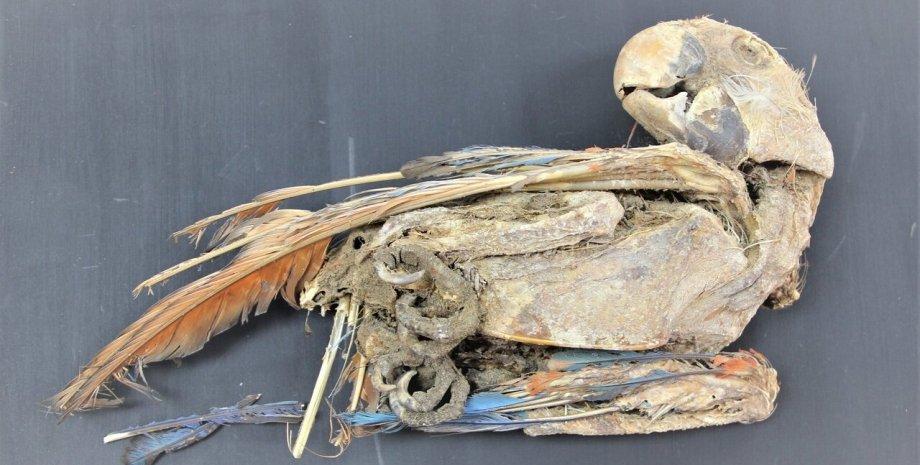In the Atacama desert, ancient civilizations buried the dead with parrots
The main feature of these birds is that they were mummified in an unusual position, some with open mouths, others with outstretched wings.
When studying ancient civilizations, burials of dignitaries are a great place to get an idea of what was considered valuable to them when they were alive, writes IFLS.
From alcohol to jewelry and even pets, they were all buried next to a once wealthy man. Among the mummified animals of the ancient Egyptians, cats, ibises and dogs abounded, but in other parts of the planet, parrots were the favorite companions of the dead.
In a new study, published in the journal Proceedings of the National Academy of Sciences, scientists have worked hard to retrieve the remains of mummified parrots and macaws that existed in the Atacama Desert (northern Chile) between 1100 and 1450 AD. NS.
These birds were not native to this region, but their mummified remains have been found in ancient burials, which testifies to the impressive distances that ancient civilizations were ready to cross in pursuit of feathered friends.
“Tropical feathers are often found in burials. They were very important symbols of wealth for the people of that time. In addition, in the early 1900s, an amateur Chilean archaeologist sent a complete tomb and offerings to the American Museum of Natural History in New York, including a mummified Amazon. from the same place, “said Jose M. Capriles, assistant professor of anthropology at the University of Pennsylvania.
Despite the fact that the Atacama Desert is the driest desert in the world, archaeological records indicate the presence of many feathers in burial sites located in this region. Moreover, some of them have been protected and preserved inside boxes, which demonstrates their value for ancient civilizations.
To conduct their analysis, the team examined the museum’s collections, examining the remains of birds that were found between 1000 and 1460 AD. NS.
Studying 27 complete and partial remains of red macaws and Amazons from five locations in the Atacama, they used zooarchaeological analysis, isotope reconstructed diet, radiocarbon dating, and ancient DNA analysis to establish which bird species and how many made the 483 km journey from the Amazon. …
The condition of these animals, even after so many centuries, indicates that caring for animals was not on the list of priorities of the inhabitants of the Atacama, since they, apparently, regularly plucked their feathers during life. In addition, the position of the mummified birds was unusual: some survived with open mouths and protruding tongues, others with outstretched wings.
“We have no idea why they were mummified in this way. They were wrapped in cloth or sacks many times. Obviously, people appreciated these birds, and so do we, as their remains provide a glimpse into the past of civilizations and animals. We hope to continue studying various aspects of the complex interactions between humans and animals that have developed in the Atacama Desert and other regions of South America over time, “concluded Capriles.
Photo: Calogero Santoro, Universidad de Tarapacá and José Capriles, Penn State












